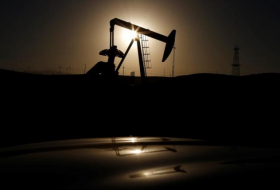Of course, there are a few problems with this scenario.
Greg Jericho has written about it and his main point regarding the Greens boils down to, “Sure, you have some Senate seats. Lovely. But that’s not really how we measure success when the planet is warming, is it?” No, it’s not, and given the state of environmental policy it’s difficult to argue that the Greens’ core mission is on track. Could this have been foreseen 30 years ago, and should the green left have joined forces with the “red” left back then and remade history?
The first problem with this idea is that it’s simplistic to paint the environmental movement as a mere offshoot of left politics. The Greens and Labor aren’t divided by minor tactical differences over whether emissions targets should be X or Y, or what year is best to move to electric vehicles. Labor is and always will be a party that champions jobs and economic growth as a way of improving the lives of Australian workers—and fair enough. The Greens also want everyone to be taken care of, but believe an economy based on exponentially increasing resource extraction has to be fundamentally re-thought. The Greens maintain that the ecology that supports us should be given primacy. This is an ideology of an entirely different sort to that which gave birth to the Labor movement.
At this point we have acknowledge that much of what is considered by outsiders to be bickering is a genuine and serious contest of ideas. This is actually healthy, not just a squabble over jobs and territory. We also hear more about the differences than the common ground. When the two parties do work together—common in parliaments, ubiquitous in local government—it generates little comment. It also provides weak campaigning fodder.
The second reason why a green merger with the Labor left would be a non-starter is that it would have only exacerbated the conflict within Labor. You could not jam the Franklin river campaigners into the same party as the forestry union and expect to see a more united and functional party. I can’t see how such a divided party would have won more elections. And as for the greenies who joined the ALP to fight the good fight, more than likely they’d have been chewed up and spat out. That’s not a criticism of Labor; which organisation would not push back on an outside group coming in to stack it out and change its mission?
Most importantly, I firmly believe that the Greens exist because they must exist. If Bob Brown and the rest of the founders of the Australian Greens had joined the ALP in 1992 instead of forming their own party, it would only briefly have delayed the inevitable rise of political environmentalism. For some of us there is a burning need for someone to stand up and say what needs to be said about this little planet of ours and the havoc we are wreaking upon it. There are many of us who are motivated primarily by the fear of environmental collapse and the hope of a better way of doing things. It is an idea whose time has come, and it must be expressed, as a political identity as well as in all walks of life. It is too big to exist merely as a sub-faction of the Labor party.
And it’s not like the change-from-within idea has not been tried. There are plenty of former ALP members in the Greens, including myself, who tried; and many in the ALP are trying still.
So where does this leave the Australian left? It is too easy to believe that the Greens and ALP are destined to bitterly slug it out from opposition and the crossbenches while the country slides into climate catastrophe. One scenario in which the two sides of progressive politics could form a detente might see Labor move to the right in an effort to recapture those parts of middle Australia and the coal belt that kept them out of government. Meanwhile, they yield enough political territory to the Greens so that when they are in government there is a strong parliamentary bloc that can push, with force if need be, for real action on climate and environmental issues. In other words, Labor could acknowledge the Greens’ right to exist and give up on the goal of winning majority government.
The phrase “yield political territory” tells you all you need to know about the chances of such an arrangement materialising.
As for a formal national coalition, there are some who see this as inevitable. The Greens have already held ministries in Labor governments in Tasmania and the ACT. But there are few in either party who think this did either partner any favours, a view reinforced by the defeat of Greens-supported Gillard/Rudd government in 2013. Therefore, the ALP will resist such an arrangement as long as possible, and the Greens may well baulk at drinking from that poisoned chalice.
It is true that some sort of alliance is in the interests of the country and the planet. Figuring out how to accomplish that is as difficult as figuring out how to unite a diverse and divided Australia. There’s a lot of work to do and not much time to do it in.
Colin Jacobs is a former staffer to Senator Richard Di Natale, serving as Greens director of policy and strategy in the Australian parliament.
Read the original article on the Guardian.
More about: LaborandGreenscoalition
















































